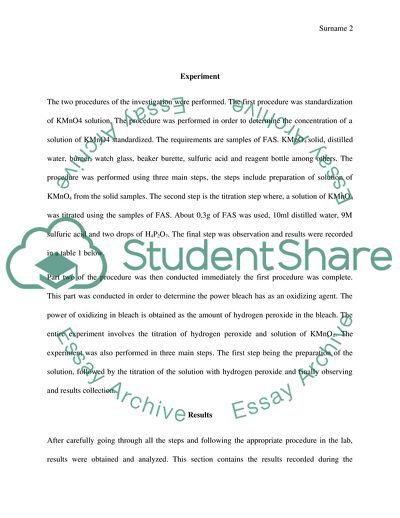How Much Hydrogen Peroxide is in Bleach Lab Report. https://studentshare.org/chemistry/1869293-how-much-hydrogen-peroxide-is-in-bleach
How Much Hydrogen Peroxide Is in Bleach Lab Report. https://studentshare.org/chemistry/1869293-how-much-hydrogen-peroxide-is-in-bleach.


